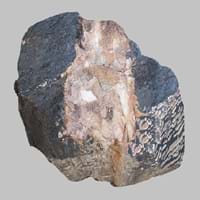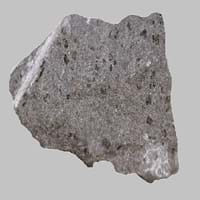Claystone and Tephrite
Definition
Definition
Claystone is a fine-grained, dark gray to pink sedimentary rock which mainly consists of compacted and hardened clay
Tephrite is an aphanitic to porphyritic textured, volcanic igneous rock
History
Origin
Unknown
Germany
Discoverer
Unknown
Van Tooren
Etymology
From English clay and stone as the rock contains more amount of clay
From Greek tephra, ashes from Indo-European base, to burn
Class
Sedimentary Rocks
Igneous Rocks
Sub-Class
Durable Rock, Medium Hardness Rock
Durable Rock, Hard Rock
Family
Group
Not Applicable
Volcanic
Other Categories
Fine Grained Rock, Opaque Rock
Coarse Grained Rock, Fine Grained Rock, Medium Grained Rock, Opaque Rock
Texture
Texture
Clastic
Aphanitic to Porphyritic
Color
Black, Blue, Brown, Green, Grey, Orange, Red, White, Yellow
Black, Brown, Colourless, Green, Grey, White
Maintenance
More
Less
Durability
Durable
Durable
Water Resistant
Yes
Yes
Scratch Resistant
Yes
Yes
Stain Resistant
No
No
Wind Resistant
No
Yes
Acid Resistant
No
No
Appearance
Rough and Dull
Vesicular
Uses
Architecture
Interior Uses
Decorative Aggregates, Entryways, Floor Tiles, Homes, Interior Decoration
Decorative Aggregates, Flooring, Homes, Interior Decoration
Exterior Uses
As Facing Stone, Roof Tiles
As Building Stone, As Facing Stone, Garden Decoration, Office Buildings
Other Architectural Uses
Curbing
Curbing
Industry
Construction Industry
As a Sintering Agent in Steel Industry to process Iron Ore, Cement Manufacture, Construction Aggregate, for Road Aggregate, Making natural cement, Raw material for the manufacture of mortar
Landscaping
Medical Industry
Not Yet Used
Not Yet Used
Antiquity Uses
Artifacts, Sculpture, Small Figurines
Artifacts, Sculpture
Other Uses
Commercial Uses
Pottery
Production of Lime, Soil Conditioner
Types
Types
Not Available
Not Available
Features
Available in Lots of Colors and Patterns, Smooth to touch, Very fine grained rock
Host Rock for Lead
Archaeological Significance
Monuments
Not Yet Used
Not Yet Used
Famous Monuments
Not Applicable
Not Applicable
Sculpture
Used
Used
Famous Sculptures
Data Not Available
Data Not Available
Pictographs
Used
Not Used
Petroglyphs
Used
Not Used
Figurines
Used
Used
Fossils
Present
Absent
Formation
Formation
Claystone is generally quite soft, but can be hard and brittle. It forms due to weathering of mudstone.
Tephrite is a fine-grained, hard rock which is a type of metasomatite, essentially altered basalt. It forms with or without crystallization, either below the surface as intrusive rocks or on the surface as extrusive rocks.
Composition
Mineral Content
Biotite, Chlorite, Feldspar, Micas, Muscovite or Illite, Plagioclase, Pyrite, Quartz
Alkali feldspar, Nepheline, Plagioclase, Pyroxene
Compound Content
Aluminium Oxide, Ca, NaCl, CaO, Iron(III) Oxide, MgO, Silicon Dioxide
CaO, Carbon Dioxide, MgO, Silicon Dioxide
Transformation
Metamorphism
No
Yes
Types of Metamorphism
Not Applicable
Cataclastic Metamorphism, Contact Metamorphism, Impact Metamorphism, Regional Metamorphism
Weathering
Yes
Yes
Types of Weathering
Biological Weathering, Chemical Weathering, Mechanical Weathering
Biological Weathering, Chemical Weathering, Mechanical Weathering
Erosion
Yes
Yes
Types of Erosion
Coastal Erosion, Water Erosion
Chemical Erosion, Coastal Erosion, Glacier Erosion, Sea Erosion, Water Erosion
Properties
Physical Properties
Hardness
3.5-4
6.5
Grain Size
Fine Grained
Medium to Fine Coarse Grained
Fracture
Not Available
Uneven
Streak
White
Bluish Black
Porosity
Very Less Porous
Very Less Porous
Luster
Dull
Subvitreous to Dull
Compressive Strength
Not Available
90.00 N/mm2
22
Cleavage
Perfect
Crenulation and Pervasive
Toughness
2.6
2.4
Specific Gravity
0
2.86
Transparency
Opaque
Opaque
Density
2-2.9 g/cm3
2.8-2.9 g/cm3
Thermal Properties
Specific Heat Capacity
0.92 kJ/Kg K
10
0.92 kJ/Kg K
10
Resistance
Heat Resistant, Impact Resistant
Heat Resistant, Impact Resistant
Reserves
Deposits in Eastern Continents
Asia
Bangladesh, China, India, Russia
Not Yet Found
Africa
Ethiopia, Kenya, Morocco, South Africa, Tanzania
Namibia, Uganda
Europe
Austria, France, Germany, Greece, Italy, Romania, Scotland, Spain, Switzerland
Germany, Hungary, Italy, Portugal, Spain
Others
Not Yet Found
Not Yet Found
Deposits in Western Continents
North America
Canada, Panama, USA
USA
South America
Bolivia, Chile, Colombia, Ecuador, Peru, Venezuela
Not Yet Found
Deposits in Oceania Continent
Australia
New South Wales, New Zealand, Queensland, Victoria, Western Australia
New Zealand, Western Australia
All about Claystone and Tephrite Properties
Know all about Claystone and Tephrite properties here. All properties of rocks are important as they define the type of rock and its application. Claystone belongs to Sedimentary Rocks while Tephrite belongs to Igneous Rocks.Texture of Claystone is Clastic whereas that of Tephrite is Aphanitic to Porphyritic. Claystone appears Rough and Dull and Tephrite appears Vesicular. The luster of Claystone is dull while that of Tephrite is subvitreous to dull. Claystone is available in black, blue, brown, green, grey, orange, red, white, yellow colors whereas Tephrite is available in black, brown, colourless, green, grey, white colors. The commercial uses of Claystone are pottery and that of Tephrite are production of lime, soil conditioner.
|
||
|
||
|










